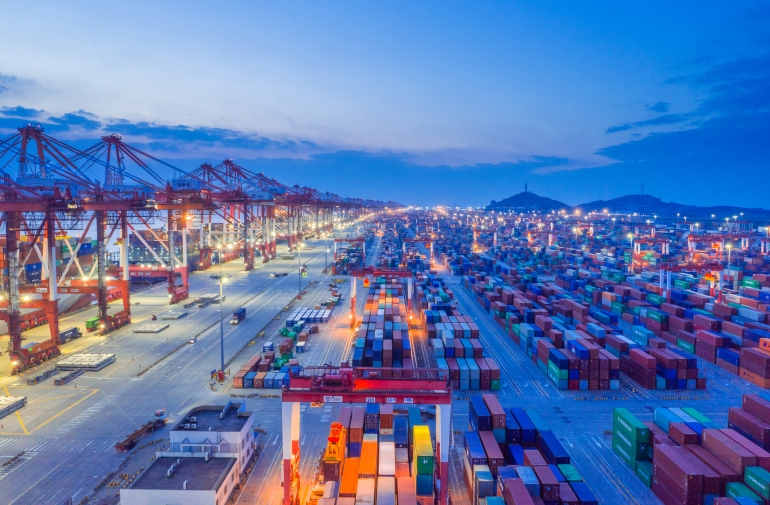Fri 24 September 2021
By Weihuan Zhou and Henry Gao
It might have come as a surprise to some, but China's formal application last week to join the Comprehensive Progressive Trans-Pacific Partnership is a chance to rethink Beijing's involvement in regional trade.
Despite concerns over its inward-looking "dual circulation" strategy, China has spent the past few months tearing down trade and investment barriers to make it easier to negotiate its entry to the 11-member trans-Pacific trade pact.
At the international level, such a move is a continuation of China's strategy of being more active in international rule-making, following the conclusion of the Regional Comprehensive Economic Partnership Agreement (RCEP) with its Asian neighbors last year, and the Comprehensive Agreement on Investment with Europe last December.
This is in marked contrast to the approach taken by the Biden Administration, which, despite its rhetoric that "America is back," has not been able to conclude or even initiate any major international trade agreement in its first eight months in office.
Moreover, domestic political considerations are likely to keep the U.S. from returning to the CPTPP anytime soon. This creates a perfect window of opportunity for China to maneuver its way into a trade pact that was, ironically, created by the U.S. in order to contain China.
China's application to join the CPTPP is not a spontaneous decision but has been long in the making. Since 2013, China has been carefully studying the CPTPP, including its predecessor the Trans-Pacific Partnership (TPP). Last November, President Xi formally confirmed China's intention to join the pact.
The process intensified earlier this year, with China's State Council finally appointing an international trade representative -- the top official in charge of the negotiation of trade agreements -- after the position was left vacant for more than two years. Around the same time, the Ministry of Commerce made the translated texts of all CPTPP chapters available on its website.
All these signals point to a continuous process of research and deliberations that culminated in the formal request for accession last week.
Filing the application was easy, but is China ready to meet the pact's high standards? Despite widespread skepticism, a careful review of the CPTPP's substantive rules shows that the gap between it and China's existing international obligations might be much narrower than many people think.
Take rules on state-owned enterprises for example. China's use of SOEs in pursuit of industrial policies and strategic goals has been a long-standing and fundamental concern of the international community. Such concern has intensified under China's current round of SOE reforms commenced in 2013, which have led to a remarkable resurrection of state capitalism.
When it joined the WTO in 2001, China already agreed to a range of obligations that extend far beyond the standard WTO rules. These WTO-plus obligations include broad and rigorous rules to discipline the market-distortive behaviors and conduct of SOEs and, more generally, government intervention in commercial activities.
While the CPTPP has advanced the general WTO rules in some significant ways, it is likely to remain less rigorous than the WTO-plus obligations tailored to China.
Notably, extensive CPTPP exceptions for SOE rules are already available to some existing members, including Mexico and Vietnam, who maintain a significant state sector. Such exceptions are not available to China under the WTO. Given the importance of SOEs in China, it is only reasonable to anticipate that China will push hard for similarly extensive exceptions under the CPTPP.
Another often-mentioned area is CPTPP rules on digital trade, which are regarded by many as impossible for China to meet. Yet, it is worth pointing out that China already accepted CPTPP-like provisions on the free flow of data across borders and the prohibition on data localization requirements in RCEP.
Yes, RCEP lags behind the CPTPP in several areas, such as not including provisions banning the forced transfer of source codes. But so far, China's requirements on the transfer of source codes are mostly found in the banking sector and goods and services for government use and would not violate CPTPP obligations as its chapter on e-commerce explicitly carved out both financial services and government procurement.
Another criticism of RCEP is the extensive exceptions for public policy and security measures, but the CPTPP also includes such exception clauses. It is true that the RCEP rules are self-judging, but the practical differences are small, with the corresponding exceptions in the CPTPP copied from WTO rules that have already been interpreted in such a manner, especially the public morals/order exception -- the one most frequently invoked.
Still, China's entry to CPTPP will not be easy, requiring the agreement of all existing members, including countries experiencing strained ties with Beijing such as Canada and Australia. Given the trust deficit, China might have to make significant overtures to both countries to help restore goodwill.
Another potential problem is the U.S. which can still block the agreement of Canada and Mexico through the "poison pill" provisions in the new United States-Mexico-Canada Agreement.
Yet this clause is unlikely to stop both countries if they really wish to pursue a deal with China. In any event, China's application to join the CPTPP will lead to interesting changes in the regional dynamics, including adjustments to the economic and political strategies of many countries.
In the long run, China's accession could further cement the Asia Pacific's role as the world's leading economic bloc, with CPTPP and RCEP playing complementing roles to further boost growth in the region.
Associate Professor Weihuan Zhou is a member of the Herbert Smith Freehills CIBEL Centre and Director of Research at UNSW Law & Justice. Henry Gao is Associate Professor of Law at Singapore Management University and Dongfang Scholar Chair Professor at the Shanghai Institute of Foreign Trade.
This article is republished from NIKKEI Asia under a Creative Commons license. Read the original article.
